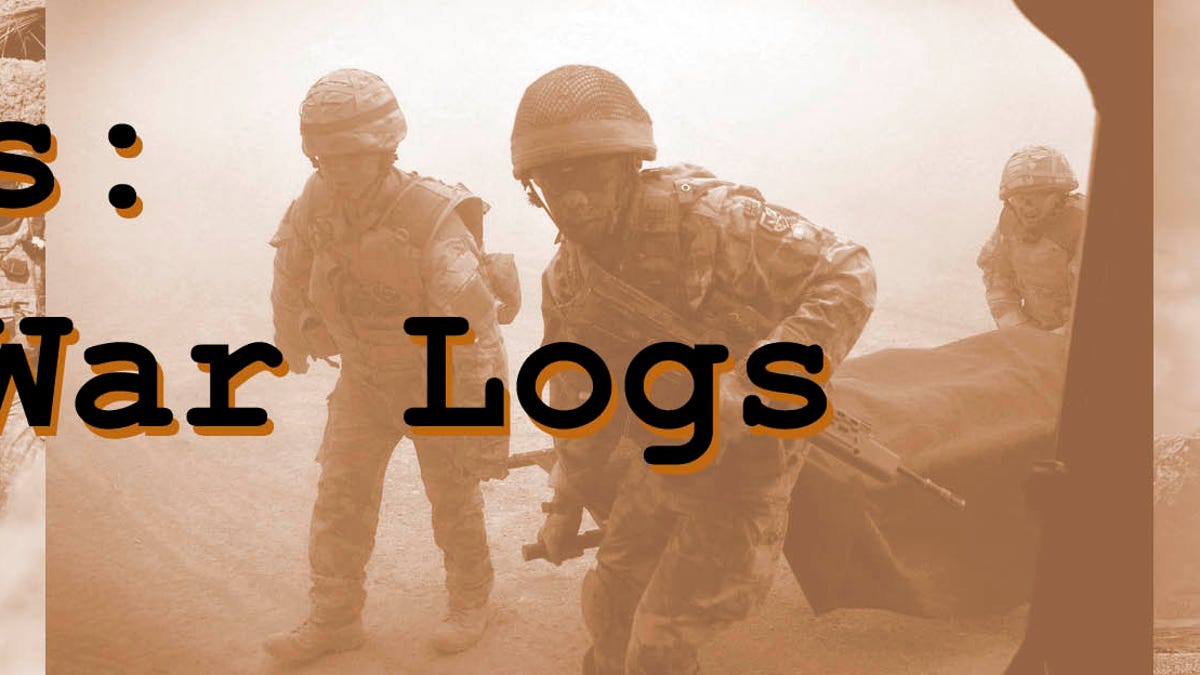Wikileaks releases massive set of Afghan war files
Document-leaking group releases tens of thousands of classified files to newspapers including the U.K. Guardian, which calls it a "devastating portrait of the failing war in Afghanistan."

Wikileaks, the document-leaking organization that has previously released internal U.S. military videos, on Sunday disclosed more than 75,000 confidential files related to the war in Afghanistan.
The group gave the documents in advance to The New York Times, Germany's Der Spiegel, and the U.K.'s Guardian newspaper, which independently confirmed their authenticity. The Guardian called the disclosure a "devastating portrait of the failing war in Afghanistan," saying it reveals how the U.S.-led coalition has killed hundreds of civilians in unreported incidents, Taliban attacks have risen, and NATO commanders worry that neighboring Pakistan and Iran are aiding the insurgency.
About 76,900 of the files--which the group calls the "Afghan War Diary"--appeared on Wikileaks.org at around 4 p.m. PDT. Wikileaks says it has delayed the release of an additional 15,000 files to allow names and other sensitive information to be removed.
The U.K. public service broadcaster Channel 4 performed its own analysis of the dispatches from individual military units, which cover the war from 2004 through the end of 2009, and concluded that 15,506 enemy deaths were reported. At least 4,232 civilians were killed, and 1,138 NATO troops were killed.
The full impact of the files may not become apparent for days, or even months, as researchers, journalists, or anyone with an Internet connection and a modicum of curiosity takes the opportunity to pore over the data. Uncompressed, the files total about 100 megabytes, which is about 20 times the size of the complete works of William Shakespeare.
A Spiegel Online special report dubbed the documents a set of "explosive leaks." The Times disclosed that it been given the material "about a month" ago and that it has "not linked to the archives of raw material," even though its coverage included the domain name Wikileaks.org in the first paragraph--posing little obstacle to anyone interested in perusing the raw data.
Reaction in Washington political circles is already beginning. The Times posted a White House memo to reporters sent Sunday evening, without naming which Obama aide wrote it, seeking to downplay the disclosure as not surprising, and saying that "Wikileaks is not an objective news outlet but rather an organization that opposes U.S. policy in Afghanistan." And Sen. John Kerry, the Massachusetts Democrat who heads the Foreign Relations Committee, said the release demonstrates that "calibrations" to the U.S. policy toward Afghanistan were necessary.
The documents revealed a greater amount of violence in Afghanistan than had previously been reported by the military or the media, Julian Assange, the organization's co-founder, told the Times.
"It shows not only the severe incidents but the general squalor of war, from the death of individual children to major operations that kill hundreds," he told the newspaper. (Wikileaks has not revealed the source of the files.)
One of the more intriguing references in the data relates to Task Force 373, which appears to have been instructed to kill its targets without arrest or trial. One report of its activities in pursuit of a suspected Al Qaeda leader said there was an "initial assessment of 7 x NC KIA (children)," meaning seven children killed in action. Another says: "The original mission was aborted and TF 373 broke contact and returned to base. Follow-up Report: 7 x ANP KIA, 4 x WIA." Translated, that means that the U.S. soldiers were shooting at and killed seven Afghan police officers, which the Defense Department neglected to disclose in its press release.
In a statement, White House national security adviser James Jones criticized the release of the documents, saying the disclosure could put American lives and national security at risk:
The United States strongly condemns the disclosure of classified information by individuals and organizations which could put the lives of Americans and our partners at risk, and threaten our national security. Wikileaks made no effort to contact us about these documents--the United States government learned from news organizations that these documents would be posted. These irresponsible leaks will not impact our ongoing commitment to deepen our partnerships with Afghanistan and Pakistan; to defeat our common enemies; and to support the aspirations of the Afghan and Pakistani people.
A video leaked earlier this year that Wikileaks titled "Collateral Murder" shows a U.S. military helicopter in Iraq destroying a vehicle that was preparing to rush a wounded journalist to a hospital. The Apache pilots appeared to mistake a news crew, who were holding cameras, for armed insurgents.
Army intelligence specialist Bradley Manning, the serviceman who allegedly provided the videos to Wikileaks, has been charged with unlawfully divulging classified information and could face a significant prison sentence.
Last updated at 11:00 p.m. PT



